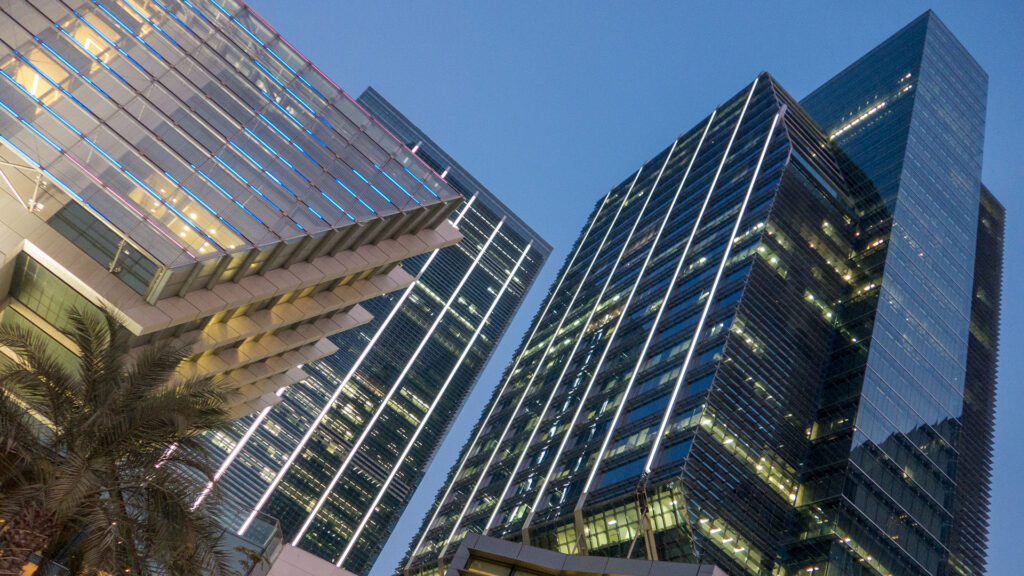OECD Foreign Bribery Report: An Analysis of the Crime of the Bribery of a Foreign Official, February 2015
An Analysis of the Crime of the Bribery of a Foreign Official. On 2 December 2014, the OECD published the “OECD Foreign Bribery Report: An Analysis of the Crime of Bribery of Foreign Public Officials” (the Report)1.
This Report looked at transnational corruption since the OECD Convention on Combating Bribery of Foreign Public Officials in International Business Transactions (OECD Anti-Bribery Convention) entered into force in 1999. The Report reviewed 427 cases which were brought against 263 individuals and 164 entities. The data within the report stems from these enforcement actions. In this Briefing we summarise the findings of the Report.
Bribery
In Article 1(1) of the OECD Anti-Bribery Convention, bribery is defined as:
“to offer, promise or give any undue pecuniary or other advantage, whether directly or through intermediaries, to a foreign public official, for that official or for a third party, in order that the official act or refrain from acting in relation to the performance of official duties, in order to obtain or retain business or other improper advantage in the conduct of international business.”
The World Bank estimates that bribery is a “US$1 trillion industry”2. The Report notes that countries are now better placed to “prevent, detect and punish this crime”. At the date of the Report, 390 investigations were underway in 24 out of 41 countries which are parties to the OECD Anti-Bribery Convention (Parties).
How is bribery detected?
Bribery schemes often involve an elaborate series of offshore transactions, multiple intermediaries and complex corporate structures. This makes detection difficult, but not impossible, for enforcement authorities. The Parties offer each other mutual legal assistance in identifying allegations of corruption and this accounts for the detection of bribery in 13% of the cases.
Self-reporting by the company or the individual was how the bribery was detected in 31% of the cases in the Report. Most of the companies that self-reported discovered the offence through due diligence, with 31% discovering the offence through internal audits and 28% discovering the offence when conducting due diligence for mergers and acquisitions. An effective anti-corruption procedure should therefore have a system where accountants and auditors are thorough and can report their suspicions to senior management who can take appropriate action.
Having procedures in place is not enough on its own. Senior management must be willing to act on the information provided to them. The Report notes one case where an employee leaked information of bribery payments to the press after the CEO failed to address the issues in an audit report which indicated suspected bribery and suggested an internal investigation and self-reporting. A leak can have a damaging effect on the reputation of the company and can also be detrimental to senior management.
It is also key that employees have a way of reporting their suspicions without fear of reprisal. In another case, bribery of a foreign official was detected in a civil suit brought by an employee who had been dismissed for refusing to be complicit in a bribery plot. Where corruption is detected in such a way, the penalties imposed on the company may be more severe. According to the Report, investigations are rarely instigated by whistleblowers or media coverage (2% and 5% respectively). However, it should be noted that over 17% of self reporting companies became aware of foreign bribery through whistleblowers.
Companies that self report may be treated with some leniency and, conversely, companies which are aware of corrupt payments and fail to self-report may be treated more severely.
Who is bribing?
According to the Report, larger companies with over 250 employees were associated with corrupt payments in 60% of the cases. SMEs were involved in 4% of the cases. Accordingly, it is not only larger companies which need to implement an efficient compliance procedure. SMEs must also take steps to combat bribery of foreign officials.
A common belief is that bribes are paid by the “rogue employee”. However, the Report notes that in 53% of the cases, the bribes paid to foreign officials were known to, or were endorsed by, corporate management, a President and/or the CEO. This is significant because in many jurisdictions, the knowledge or complicity of a senior person within a company of corrupt payments can implicate the whole company. The Report suggests that this shows how important a “tone from the top” is in combating bribery.
Who is being bribed?
Over a quarter of bribes paid were to employees of a public enterprise, i.e. state owned enterprises (SOEs) or state controlled enterprises (SCEs).
Some of the recipients of the bribes held dual roles within the government and the public enterprise. For example, the recipient may be an employee of a public enterprise whilst simultaneously working as a government minister or having a similar connection or influence within the government. The Report identifies how this emphasises the significance of effective measures for managing conflicts of interest as well as ensuring that the procurement procedure is transparent.
What is the cost of a bribe?
The highest amount offered in a single bribe scheme mentioned in the Report was US$1.4 billion. On average, bribes paid equalled 10.9% of the total transaction value and over a third of the profits. In eight of the reported cases, the bribe equalled more than 25% of the transaction value. It is clear that bribery can significantly increase the cost of doing business. These extra costs are often recouped through raising prices, cutting costs internally or entering into additional unlawful or inappropriate agreements with foreign officials. These further actions may also have other knock on effects on the business and the company’s reputation.
Not all bribes identified by the Report are of significant value. The smallest bribe in the report was worth just US$13.17. This is likely to be a facilitation payment paid to a foreign official as a “grease payment”. Such payments are not ignored by the Report and are prohibited in many countries. The Report observes that customs officials were bribed in 11% of the cases, but the bribes they received constituted only 1.14% of the total bribes paid in the reported cases. The fact that the bribe paid was small does not necessarily absolve the defendant company from enforcement action.
How are bribes being paid?
In most foreign bribery cases, corrupt payments are not made directly by the company. Intermediaries are used in three out of four cases according to the Report. Agents were used as intermediaries in 41% of the cases. Corporate vehicles, such as subsidiaries of the defendant or where the beneficial owner was the bribed party, were used in 35% of the cases. Other intermediaries included family members of foreign officials and professionals such as lawyers and accountants. An effective compliance procedure will take into consideration all the various ways in which corrupt payments may be made and received.
Where are bribes being paid?
Two-thirds of the cases were in four sectors: extractive, construction, transportation and storage, and communications. More than half of the cases involved public procurement contracts. These figures indicate where the risk of corrupt payments is higher.
Generally, it is assumed that bribes are paid by wealthy companies from developed countries to foreign officials in corrupt governments of less developed countries. However, according to the Report, one in two bribes were paid to officials in countries that were higher on the UN Human Development index. This suggests that the perception of what is a ‘high risk jurisdiction’ may need to be revisited to ensure that companies are conducting thorough due diligence.
Punishment?
Anti-corruption investigations can be expensive and time consuming. On average, it took 7.3 years to conclude a case of bribery of a foreign official in 2013 from the commission of the last offence and the imposition of the sanction. This long period of time can be explained in a number of ways, such as corporate reluctance to settle or the company’s ignorance of the bribery payments. It should be noted that in 69% of cases, companies accused of bribing foreign officials settled the case.
The OECD Anti-Bribery Convention requires the penalties imposed for bribing foreign officials to be “effective, proportionate and dissuasive”. The punitive methods provided for in Parties’ national legislation include civil or criminal fines, confiscation of the proceeds and instrument of the bribe, imprisonment, injunctions, compensation, debarment and dissolution.
An “extremely low” number of cases involved the debarment of the defendant company. Debarment is where a company is precluded from taking part in national public procurement processes for a limited period of time. Although over half the bribery cases involved public procurement, there were only two reported cases of a company being debarred from public procurement processes as a penalty by the courts. However, debarment are in practice more frequent under, for example, EU public procurement legislation and agreements between the development banks.
Another penalty which the Report notes as under utilised is dissolution. Only one case involved a company being dissolved due to paying bribes. It is a severe penalty and companies should be aware that it can be imposed.
Generally, financial penalties are the most common sanction imposed against companies. The highest monetary sanction that was imposed against a single company was €1.8 billion. In eight cases, the monetary sanction was worth over 200% of the profit gained by the defendant company. Companies may also face civil action by the ‘victims’ of their corruption.
Companies are not the only targets of severe anti-bribery penalties. 80 individuals were given prison sentences for foreign bribery offences. In one case involving the conspiracy to commit foreign bribery, an aggregate prison sentence of 13 years was imposed on a single individual on eleven counts of corruption. In addition, individuals may also face fines and other similar monetary sanctions. The highest monetary sanction against an individual was a US$149 million forfeiture order.
The legal sanctions against individuals and companies can be severe but there will be other consequences. Companies will experience reputational damage and receive negative press in the media. They may lose business contacts and staff who do not wish to be affiliated with an organisation known for corrupt practices. Individuals may also have these same problems. However, self-reporting entities or entities with good internal procedures may be able to avoid the full impact of these penalties.
Conclusion
This Report demonstrates the pervasive nature of corruption. The risk of time-consuming investigations and severe penalties should not be taken lightly. Accordingly, if a company comes across evidence of bribery of a foreign official by its employees or affiliated persons, it should address the issue and consider self-reporting. In many jurisdictions, self-reporting can alleviate the penalties imposed against the company and can save time, money and public standing.
All companies should carry out ongoing risk assessments. This should not be a practice undertaken simply because of a ‘high risk jurisdiction’ or ‘public procurement transaction’ or ‘local agent involvement’. Whilst the presence of these factors should signify the need to undertake a more thorough assessment, it has been shown that bribes can be demanded and paid in many different situations and companies should ensure that they have taken all necessary precautions to limit their exposure to corrupt payments. An effective compliance procedure will ensure that companies discover at an early stage any corrupt practices with bona fide information that could potentially save the company from the risks of corruption and the costs involved in exposure and sanctions.
At a conference held in London on 23 January 2015 focusing on the Report, three key trends were noted:
- Since the financial crisis in 2008, the commercial world has become more regulated. The regulatory changes are not just knee-jerk reactions which will fade over time. New legislation imposing reporting obligations in key sectors are now key facets of national and international business designed to combat corruption3.
- Companies must remain aware of the interlinked nature of financial crime. Cartels, corrupt payments to foreign officials and money laundering are often not mutually exclusive offences.
- The number of prosecutions for bribery of foreign officials is likely to increase. Governments are under pressure to take anti-corruption measures in an effort to increase governmental accountability in notably corrupt regimes.
Action plans
Companies must ensure that they have procedures in place which are designed to deter employees and affiliated third parties from committing a financial crime. The procedures should be designed to detect the existence of bribery and corruption and promote transparency in business transactions. It is key that, regardless of the jurisdiction or industry, companies carry out proactive risk assessments which are effective and proportionate in the circumstances. Finally, companies should ensure that senior management maintain an anti-corruption policy which is observed and monitored throughout the company. If a company discovers evidence of corruption or bribery in its operations, it should consider self reporting to minimise the fallout of the discovery.
For more information, please contact Anthony Woolich, Partner on +44 (0)20 7264 8033 or anthony.woolich@hfw.com or your usual contact at HFW.
Footnotes
- OECD (2014), OECD Foreign Bribery Report: An Analysis of the Crime of Bribery of Foreign Public Officials, OECD Publishing. http://www.oecd-ilibrary.org/governance/oecd-foreign-bribery-report_9789264226616-en
- World Bank Live. http://live.worldbank.org/corruption-can-it-ever-be-controlled
- See for example Regulation 1227/2011 on the Regulation on Wholesale Energy Market Integrity and Transparency; and EU Directive 2013/34/EU also called “the Accounting Directive”.
Download a PDF version of ‘OECD Foreign Bribery Report: An Analysis of the Crime of the Bribery of a Foreign Official, February 2015’







